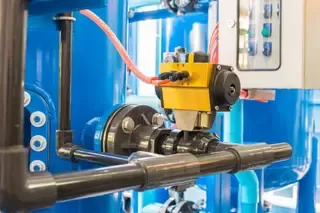Notifications

5 minutes, 25 seconds
-133 Views 0 Comments 0 Likes 0 Reviews

We are a leading control valve manufacturer in China, delivering high-quality valves and control actuators engineered to meet the diverse demands of various industrial applications.
Control valves are the backbone of fluid regulation in industrial systems, playing a crucial role in controlling flow rate, pressure, and temperature. Found in sectors ranging from oil and gas to water treatment and chemical processing, these valves ensure operational stability and safety.
Despite being engineered for durability, control valves are subject to wear, erosion, and failure due to continuous operation in demanding environments. However, with proper understanding, strategic use, and regular maintenance, their service life can be significantly extended—saving time, money, and preventing costly system downtime.
Occurs when the valve fails to seal completely, allowing unintended flow through the seat.
Causes:
Worn seats, plugs, or seals
Debris obstructing closure
Poor actuator calibration or DCS misconfiguration
Solution:
Inspect and disassemble the valve; clean and replace damaged parts. Ensure precise actuator setup and periodic calibration.
Evident when fluid escapes from the valve’s body or packing gland.
Causes:
Worn-out packing or gaskets
Material incompatibility with process media
Loose fasteners or thermal expansion damage
Solution:
Replace packing/seals, verify material compatibility, tighten bolts, and check for structural deformation or corrosion.
The valve does not move smoothly or fails to respond to control signals.
Causes:
Over-tightened packing
Internal corrosion
Debris buildup inside the valve body
Solution:
Disassemble, clean, and lubricate moving parts. Use filters to prevent contamination and follow correct packing torque specs.
Operating initially at 90% open localizes wear to the plug head. As erosion occurs, gradually close the valve to use fresh throttling surfaces—potentially extending life 1 to 5 times.
Lowering differential pressure minimizes stress and cavitation. Achieve this by:
Adding orifice plates downstream
Partially closing isolation valves
Selecting valves with larger minimum operating openings
Oversized valves often operate at small openings—leading to instability and wear. Downsizing increases the usable control range and reduces concentrated erosion.
Options:
Swap valve body to smaller size
Retain body and replace internal trim (smaller Cv)
Design the system so wear occurs on non-sealing components. Use sacrificial inserts, adjust trim geometry, or redesign flow paths to protect seals and plugs.
Changing from “flow-to-open” to “flow-to-close” moves the erosive zone away from critical sealing areas—extending valve life significantly. Always verify this is supported by the valve’s design.
Responding after failure—used only when unavoidable.
Actions:
Investigate root cause
Replace damaged parts
Recalibrate after repair
Drawback: Leads to unplanned downtime and higher repair costs.
Scheduled inspections and service before failure occurs.
Tasks Include:
Inspect seals, packing, and moving parts
Lubricate stems and internals
Flush pipelines to remove buildup
Keep distance from high-vibration sources
Avoid stressing valve bodies during installation
Benefit: Reduces risk of failures and ensures consistent performance.
Utilizes real-time diagnostics to anticipate failures and optimize service intervals.
Techniques:
Smart positioners for stroke monitoring
Sensors for vibration, temperature, and pressure
Acoustic emission leak detection
Integration with asset management systems for trend analysis
Benefit: Prevents over-servicing, reduces costs, and maximizes uptime.
Control valves are a long-term investment, and with the right strategies, they can provide years of trouble-free performance. By understanding common failure modes, implementing operational best practices, and embracing proactive maintenance, industries can avoid costly downtime, improve process reliability, and extend the life of these critical components.
Whether regulating steam, gas, liquids, or corrosive chemicals, your valve's longevity depends on how you manage wear, monitor condition, and respond to early warning signs.Know more about Google SEO Directory
